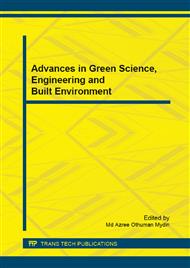p.76
p.80
p.84
p.88
p.93
p.97
p.101
p.105
p.109
Historic Urban Areas in Heritage Tourism: Kuala Lumpur Historic City Centre, a Potential Asset
Abstract:
In the process of the economy’s transit into the post-industrial societies to reach sustainability, the tourism industry has been growing through the past half century and has become one of the fastest-growing and largest sectors in the economy. Stability of this source of income demands crucial attempts in diversifying attractiveness of destinations for the purpose of both attracting more visitors as well as increasing their length of stay. In this regard, historic urban heritage has a significant potential and is an important asset, capable of boosting heritage tourism. Rapid development in Malaysia, has resulted in the formation of a global, identical and new image for its cities, particularly, Kuala Lumpur. Urbanization also leads to the deterioration of the Kuala Lumpur historic urban areas so that, the identity and historic image of city is being dominated by modernity. Therefore, this capacity of attraction is being marginalized in competition with other sources of attraction. This paper reports the finding of a study in which reviewing the current literature in addition to analysing the tourism trend and statistics in Malaysia resulted in the conceptualization of a proposed idea. This idea suggests proper consideration for enhancing the capability of Kuala Lumpur historic urban heritage besides its other attractiveness in advocating the tourism industry.
Info:
Periodical:
Pages:
93-96
Citation:
Online since:
March 2015
Price:
Сopyright:
© 2015 Trans Tech Publications Ltd. All Rights Reserved
Share:
Citation:


